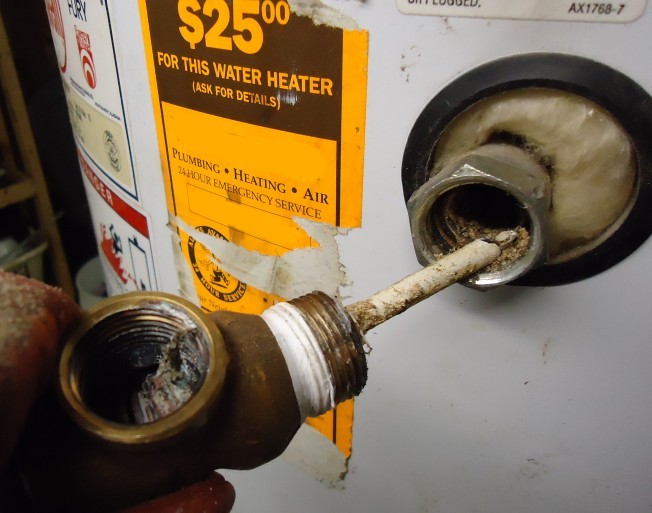Professional Tips on Maintaining Your Home's Hot Water System
Professional Tips on Maintaining Your Home's Hot Water System
Blog Article
This great article on the next paragraphs pertaining to What Kind of Maintenance Do Water Heaters Need? is amazingly remarkable. Don't miss out on it.

Warm water is essential for day-to-day comfort, whether it's for a revitalizing shower or washing recipes. To ensure your warm water system runs efficiently and lasts much longer, regular maintenance is vital. This article offers sensible suggestions and understandings on how to preserve your home's hot water system to prevent disturbances and expensive fixings.
Introduction
Preserving your home's hot water system may appear challenging, yet with a few basic actions, you can ensure it runs efficiently for years ahead. This overview covers everything from comprehending your warm water system to DIY maintenance ideas and knowing when to contact specialist help.
Value of Keeping Your Hot Water System
Routine upkeep not just extends the life expectancy of your warm water system yet also ensures it runs efficiently. Ignoring upkeep can lead to reduced performance, greater energy bills, and even early failing of the system.
Signs Your Hot Water System Requirements Maintenance
Knowing when your hot water system requires focus can protect against major issues. Watch out for indications such as irregular water temperature level, strange noises from the heating unit, or rustic water.
Comprehending Your Warm Water System
Prior to diving right into upkeep tasks, it's useful to comprehend the fundamental elements of your warm water system. Commonly, this consists of the hot water heater itself, pipelines, anode poles, and temperature controls.
Monthly Maintenance Tasks
Regular monthly checks can help catch minor issues before they escalate.
Flushing the Water Heater
Flushing your water heater removes sediment buildup, improving efficiency and lengthening its life.
Monitoring and Changing Anode Rods
Anode poles stop rust inside the storage tank. Checking and replacing them when worn is essential.
Examining and Adjusting Temperature Settings
Readjusting the temperature level setups makes sure ideal performance and security.
DIY Tips for Maintenance
You can execute numerous upkeep tasks yourself to keep your warm water system in top condition.
Looking for Leakages
On a regular basis examine pipes and links for leakages, as these can cause water damage and higher costs.
Checking Pressure Relief Valves
Examining the stress safety valve ensures it operates properly and avoids excessive stress accumulation.
Protecting Pipes
Shielding warm water pipes lowers warm loss and can save energy.
When to Call a Specialist
While DIY maintenance is valuable, some problems require specialist competence.
Complex Concerns Needing Professional Aid
Examples include significant leaks, electric issues, or if your water heater is continually underperforming.
Routine Professional Upkeep Advantages
Specialist maintenance can consist of complete evaluations, tune-ups, and making sure conformity with security standards.
Final thought
Regular upkeep of your home's warm water system is vital for efficiency, long life, and cost financial savings. By following these ideas and knowing when to seek expert help, you can make sure a dependable supply of hot water without unanticipated disruptions.
How to Maintain an Instant Hot Water Heater
Before tinkering with your hot water heater, make sure that it’s not powered on. You also have to turn off the main circuit breaker and shut off the main gas line to prevent accidents. Also turn off the water valves connected to your unit to prevent water from flowing into and out of the appliance. 2. When you’re done, you have to detach the purge valves’ caps. These look like the letter “T†and are situated on either side of the water valves. Doing so will release any pressure that has accumulated inside the valves while at the same time avoid hot water from shooting out and burning your skin. 3. When the purge valves’ caps are removed, you have to connect your hosing lines to the valves. Your unit should have come with three hoses but if it didn’t, you can purchase these things from any hardware or home repair shops. You can also get them from retail stores that sell water heating systems. Read the user’s manual and follow it to complete this task properly. When the hosing lines are connected, open the purge port’s valves. 4. You should never use harsh chemical cleaners or solutions when cleaning your unit. Make use of white vinegar instead. It should be undiluted and you’ll probably use about 2 gallons. 5. Now flush your water heater. This task should probably take about 40 minutes. We can’t give you specific directions for this because the procedure is carried out depending on the type, model and brand of your heater. With that being said, refer to the user’s manual. 6. When you’re done draining the unit, you have to turn off the purge port valves again. Remove the hosing lines that you earlier installed on each of the water valves. Put the valve caps (purge port) back in their respective places and be very careful so as not to damage the rubber discs that are found inside these caps. 7. Now that everything’s back in place, check your user’s manual again to find out how to reactivate your water heating system. 8. Once it is working, turn one of your hot water faucets on just to let air pass through the heater’s water supply pipes. Leave the tap on until water flows smoothly out of it. https://www.orrplumbing.com/blog/2014/september/how-to-maintain-an-instant-hot-water-heater/

I hope you enjoyed reading our article about How to Maintain a Hot Water Heater in a Few Simple Steps. Thank you so much for finding the time to browse our short article. For those who appreciated our blog entry kindly be sure to pass it around. We treasure reading our article about Tips For Maintaining Your Hot Water Heater.
Rates Report this page